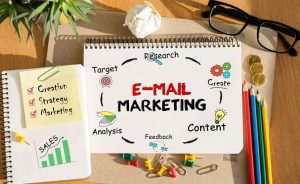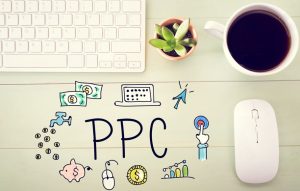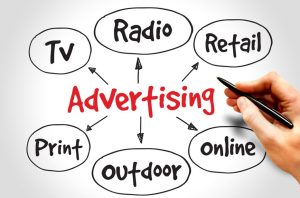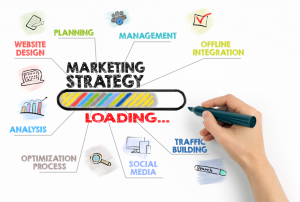Most small business owners understand that marketing and advertising can play an important role in generating and growing revenue. But there are a wide variety of ways in which to do so and choosing the right options can seem like a daunting task, but it doesn’t have to be. It is important to first choose strategies that you believe will get the best reaction from both current and prospective clients then adapt accordingly based on the results. If your small business is new to the marketing world (or you are looking for new inspiration), below are some effective strategies to consider implementing that can help to further promote your small business:
 Social Media: Sources such as Facebook, Instagram, YouTube and LinkedIn offer easy ways to directly connect with customers and promote the company’s products and services in a unique way. Starting casual discussions and interactions on social media to build a trusting relationship with clients to eventually gain sales is a strong starting option. In addition, content forms such as how-to videos, behind-the-scenes content, customer testimonials, infographics and blogs, among others, can be helpful in establishing a connection with clients as well. However, social media activity normally should be used in combination with regular digital ads, email ads and partnerships with complementary businesses.
Social Media: Sources such as Facebook, Instagram, YouTube and LinkedIn offer easy ways to directly connect with customers and promote the company’s products and services in a unique way. Starting casual discussions and interactions on social media to build a trusting relationship with clients to eventually gain sales is a strong starting option. In addition, content forms such as how-to videos, behind-the-scenes content, customer testimonials, infographics and blogs, among others, can be helpful in establishing a connection with clients as well. However, social media activity normally should be used in combination with regular digital ads, email ads and partnerships with complementary businesses.
 Email Marketing Campaign: An email marketing campaign is a good way of connecting with clients and keeping them up to date on current promotions, sales and company news. An effective email campaign should have a call to action (such as visiting the website or the physical store). For clients that have already done business with the company, reengagement activities such as periodic newsletters and push notifications with discounts or promotional details could also generate repeat business.
Email Marketing Campaign: An email marketing campaign is a good way of connecting with clients and keeping them up to date on current promotions, sales and company news. An effective email campaign should have a call to action (such as visiting the website or the physical store). For clients that have already done business with the company, reengagement activities such as periodic newsletters and push notifications with discounts or promotional details could also generate repeat business.
 Online Paid Advertising: Online platforms such as Google Ads can provide access to clients already looking for businesses that provide the same products and services as your company offers. Pay-per-click (PPC) advertising is one of the most popular online paid advertising options due to its relatively low costs and flexibility.
Online Paid Advertising: Online platforms such as Google Ads can provide access to clients already looking for businesses that provide the same products and services as your company offers. Pay-per-click (PPC) advertising is one of the most popular online paid advertising options due to its relatively low costs and flexibility.
Keep the Website Updated and Utilize Search Engine Optimization (SEO): SEO brings in significantly more website views than organic social media and, on average, SEO leads also typically have higher sales conversion rates. Through using relevant keywords related to the business and including fresh content on the website (including promotions or new offerings) this can help improve search rankings on Google or other search engines. Generating organic website traffic through posting YouTube videos or blogs is also helpful to getting good SEO results.
 TV/ Radio/Ads on Public Transit: Running advertisements on TV and radio are very effective in bringing in the most new customers. Creative TV and radio ads are especially well suited for increasing brand awareness fast and efficiently with broad audiences. Radio ads are best suited for targeting local audiences and people with specific interests. Meanwhile, ads on public transit are usually cost effective due to the sheer amount of public transit users across many demographics. Ads on public transit are also especially effective if the business is located near high-traffic stops or bus stations. It is recommended that catchy visuals or headlines are used and be sure to include easy-to-read contact information to get the viewer’s attention as well.
TV/ Radio/Ads on Public Transit: Running advertisements on TV and radio are very effective in bringing in the most new customers. Creative TV and radio ads are especially well suited for increasing brand awareness fast and efficiently with broad audiences. Radio ads are best suited for targeting local audiences and people with specific interests. Meanwhile, ads on public transit are usually cost effective due to the sheer amount of public transit users across many demographics. Ads on public transit are also especially effective if the business is located near high-traffic stops or bus stations. It is recommended that catchy visuals or headlines are used and be sure to include easy-to-read contact information to get the viewer’s attention as well.
 Get Involved With the Local Community: Being involved in the community not only gets your business’ name out there, it also allows potential clients to actually get to know who owns the business on a personal level and that they know who they are (or potentially will be) working with. Some easy ways of accomplishing that include having a tent at the local community festival (while mingling with attendees), participating in local fairs or at local trade shows, sponsoring one of the local youth baseball or soccer teams, hosting a demonstration of your products/services and hosting charitable events. In addition, interacting with locals at trade schools could be an avenue for finding developed employees in today’s tight labor market.
Get Involved With the Local Community: Being involved in the community not only gets your business’ name out there, it also allows potential clients to actually get to know who owns the business on a personal level and that they know who they are (or potentially will be) working with. Some easy ways of accomplishing that include having a tent at the local community festival (while mingling with attendees), participating in local fairs or at local trade shows, sponsoring one of the local youth baseball or soccer teams, hosting a demonstration of your products/services and hosting charitable events. In addition, interacting with locals at trade schools could be an avenue for finding developed employees in today’s tight labor market.
 Partner with Local Businesses: Local business partnerships can increase a company’s presence in the local community (and ideally result in increased sales for both entities involved). This can be accomplished through cross-promotions (i.e. dine-and-shop discounts), joint referral programs, and offering co-branded, complementary products bundled together.
Partner with Local Businesses: Local business partnerships can increase a company’s presence in the local community (and ideally result in increased sales for both entities involved). This can be accomplished through cross-promotions (i.e. dine-and-shop discounts), joint referral programs, and offering co-branded, complementary products bundled together.
 Flyers and Brochures: While these avenues may seem outdated in today’s technology-driven world, brochures/flyers and print ads (which provide detailed descriptions of the company’s products and services) are still very effective at bringing in new customers. Brochures/flyers provide relatively cheap, multifaceted, and effective marketing if provided to the right audience and can be particularly helpful for small businesses. By adding features like QR codes or discount codes, they provide trackable results that support digital marketing techniques.
Flyers and Brochures: While these avenues may seem outdated in today’s technology-driven world, brochures/flyers and print ads (which provide detailed descriptions of the company’s products and services) are still very effective at bringing in new customers. Brochures/flyers provide relatively cheap, multifaceted, and effective marketing if provided to the right audience and can be particularly helpful for small businesses. By adding features like QR codes or discount codes, they provide trackable results that support digital marketing techniques.
Other marketing strategies that will not cost the company a dime but can also be effective include word-of-mouth advertising, customer referrals or simply having a conversation with a potential customer while out and about.
 When developing a marketing plan, small business owners should identify strategies that they believe will be effective with drawing their clients in and then adjust those efforts (based on the results) as they see fit. If you feel you could use some additional working capital to increase marketing efforts, consider reaching out to Penhurst Capital today. Penhurst specializes in assisting small businesses secure the much needed financing they need to not only cover the costs of marketing, but for any other need related to running a small business as well.
When developing a marketing plan, small business owners should identify strategies that they believe will be effective with drawing their clients in and then adjust those efforts (based on the results) as they see fit. If you feel you could use some additional working capital to increase marketing efforts, consider reaching out to Penhurst Capital today. Penhurst specializes in assisting small businesses secure the much needed financing they need to not only cover the costs of marketing, but for any other need related to running a small business as well.



